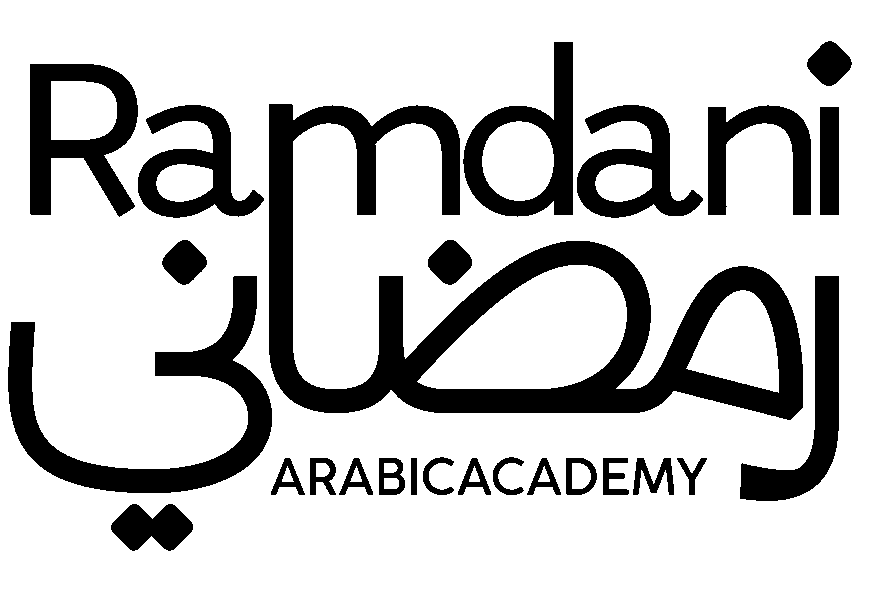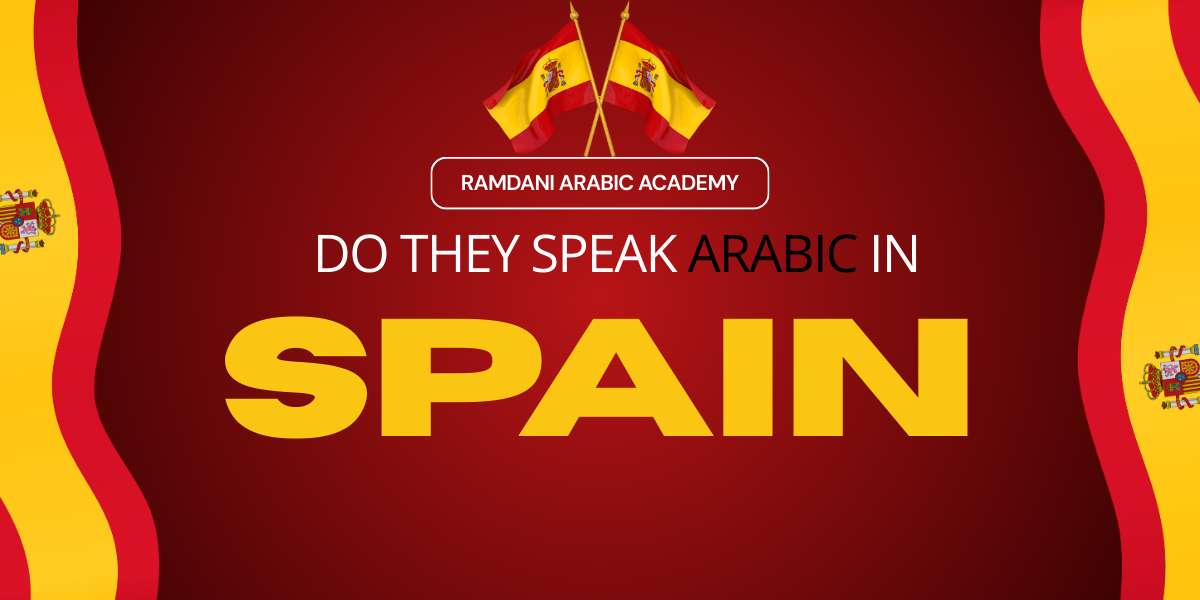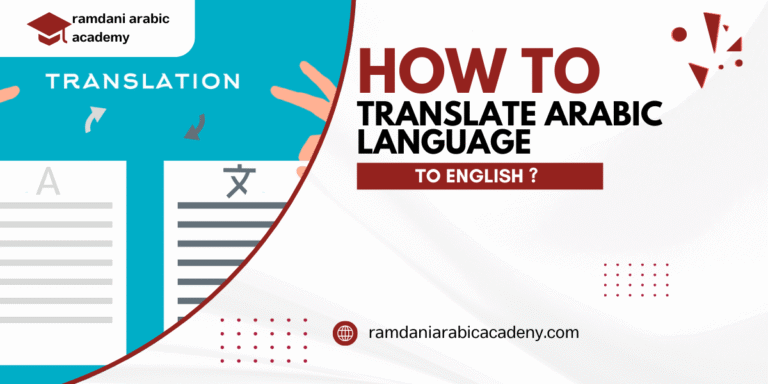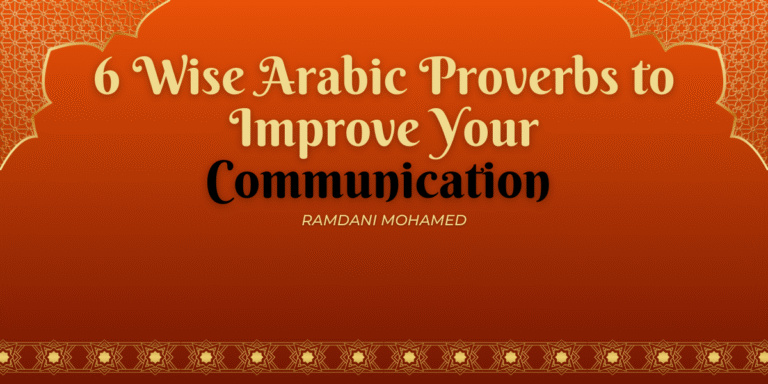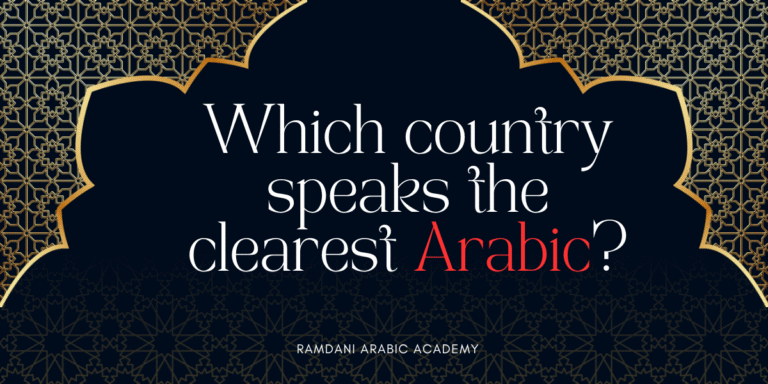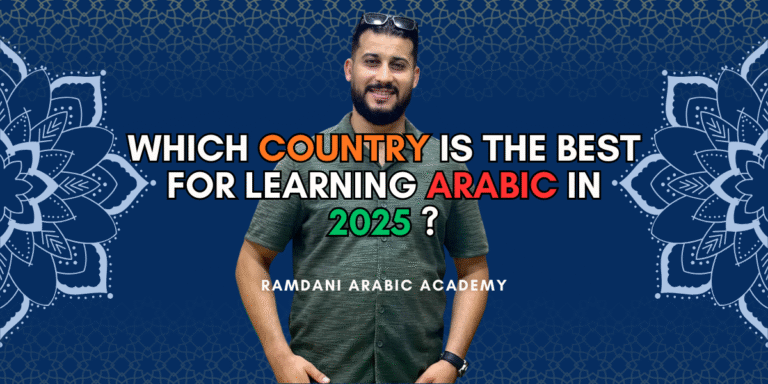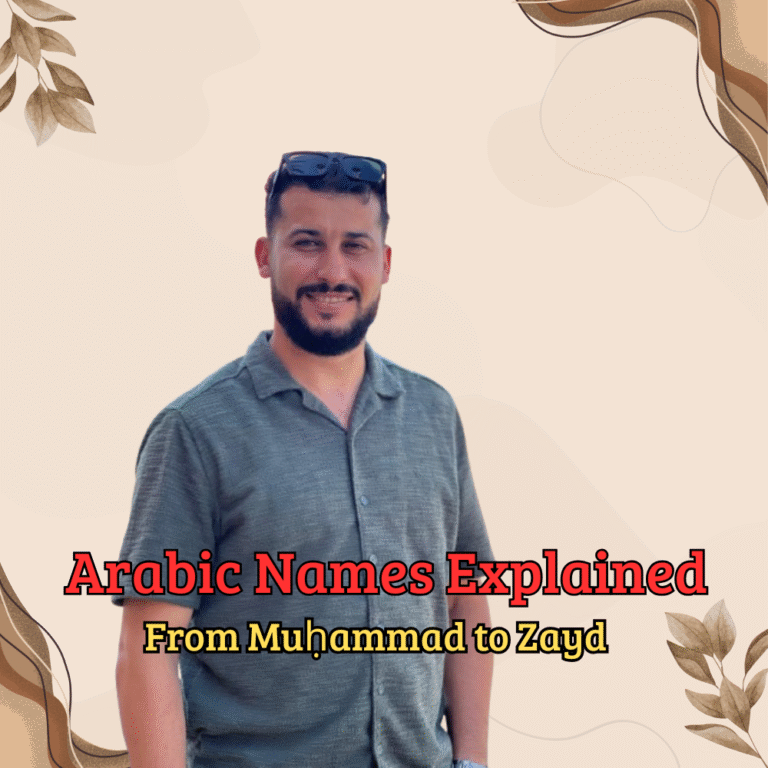Do they speak Arabic in Spain?
When you think of Spain, you probably imagine flamenco dancing, tapas, bullfighting, and the sound of Spanish being spoken everywhere. But for many learners of Arabic, a question comes up: do people in Spain speak Arabic? The answer is not as simple as yes or no. To understand it, you need to know Spain’s history, its population today, and the way languages work in the country.
Arabic has a deep connection with Spain. For almost eight hundred years, large parts of Spain were under Muslim rule. This period is often called Al-Andalus. During this time Arabic was not just a spoken language but also the language of science, philosophy, architecture, and poetry. Many cities in southern Spain still carry traces of this past. You can see it in the Alhambra in Granada, the Great Mosque of Córdoba, and the names of towns and rivers that come from Arabic words. This history makes Spain one of the most interesting places to talk about Arabic.
Today, Spanish is the main language of the country, but Arabic still has a presence. Spain has a growing Arabic-speaking community. Many immigrants come from Morocco, Algeria, and other Arabic-speaking countries in North Africa. Most of them live in the south of Spain or in big cities like Madrid and Barcelona. They speak Arabic at home and often with their friends. In some areas close to Morocco, like Ceuta and Melilla, Arabic is widely spoken in the streets.
Spain’s connection with Arabic is not just about immigrants. Many Spanish words come from Arabic. If you look at the Spanish dictionary, you will find thousands of words with Arabic roots. Everyday words like “azúcar” (sugar), “aceite” (oil), and “ojalá” (hopefully) are all from Arabic. This influence makes Spanish unique and shows how two cultures shaped each other for centuries.
In recent years, more Spanish schools and universities have started teaching Arabic as a foreign language. Students are interested in learning about the culture of the Middle East and North Africa, doing business with Arabic-speaking countries, or simply exploring their own country’s history. This shows that Arabic still matters in Spain, even if it is not the main language.
When you look at the bigger picture, the story of Arabic in Spain is a story of history, migration, and cultural exchange. Understanding it helps you see why Arabic is still important today and why learning it can open doors to many opportunities. Whether you are a traveler curious about languages, a student of history, or someone learning Arabic yourself, Spain is a fascinating place to explore the past and present of this language.
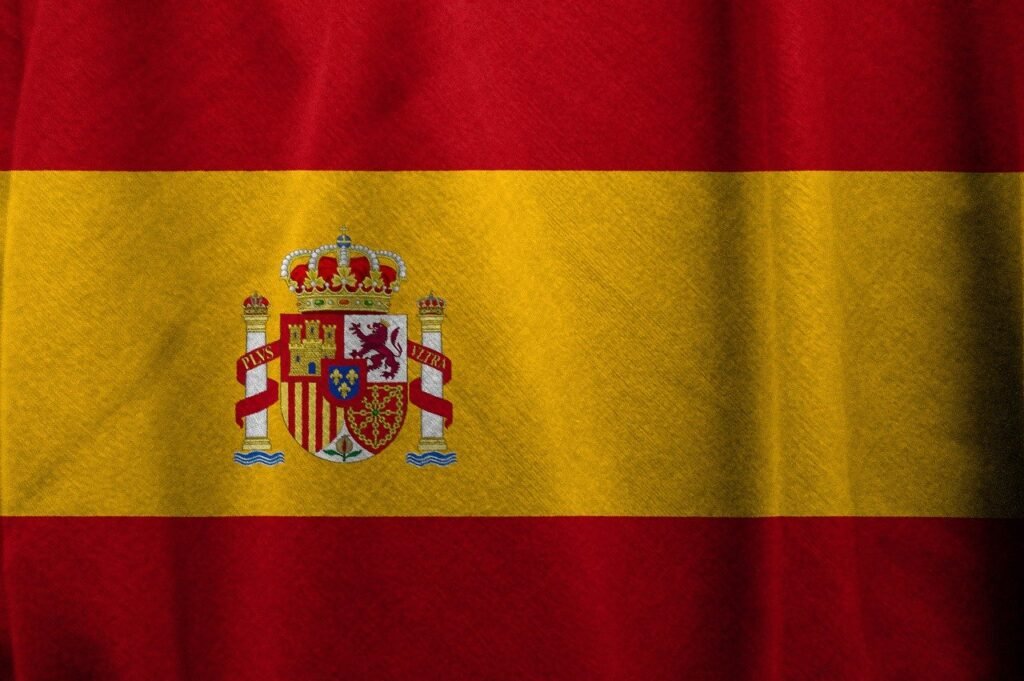
The History of Arabic in Spain
To understand Arabic in Spain today, you have to look back at the past. The history of Arabic in Spain begins in 711 AD, when Muslim forces from North Africa crossed the Strait of Gibraltar and defeated the Visigothic kingdom. This marked the start of a new era known as Al-Andalus. Over time, most of the Iberian Peninsula came under Muslim rule. Arabic became the main language of government, religion, education, and trade.
Arabic was more than just a spoken language. It became a symbol of culture and learning. During this period, Spain was one of the most advanced parts of Europe. Cities like Córdoba, Seville, and Granada were centers of science, philosophy, mathematics, and medicine. Libraries in Córdoba held hundreds of thousands of books at a time when much of Europe had very few. Scholars translated works from Greek, Persian, and Indian sources into Arabic. These texts were later translated into Latin and helped shape European thought during the Renaissance.
Daily life was also shaped by Arabic. People in Al-Andalus used Arabic words for farming tools, cooking ingredients, and clothes. Even Christians and Jews living under Muslim rule often spoke Arabic alongside their own languages. This mixing of cultures produced a unique society where Muslims, Christians, and Jews lived side by side, sharing ideas and traditions.
But Arabic in Spain was not one single dialect. There was Classical Arabic, the formal language of literature and religion, and there was Andalusi Arabic, the everyday spoken form. This dialect was different from the Arabic spoken in the Middle East or North Africa at the time. It developed its own sounds and vocabulary, influenced by local languages like Latin and Berber.
For nearly 800 years, Arabic remained a powerful language on the peninsula. But the Christian kingdoms in the north of Spain slowly began to expand southward in a process called the Reconquista. By 1492, Granada, the last Muslim kingdom, surrendered to Ferdinand and Isabella. This was a turning point. Spanish became the dominant language, and Arabic gradually disappeared from public life.
The new rulers pushed for religious and cultural unity. Muslims who stayed in Spain, known as Mudéjars, were allowed to practice their religion at first, but over time they faced increasing pressure to convert to Christianity. Those who converted, known as Moriscos, still often spoke Arabic or a mix of Arabic and Spanish. The government eventually banned Arabic books, Arabic names, and even speaking Arabic in public. By the early 17th century, many Moriscos were expelled from Spain entirely. This marked the end of Arabic as a major spoken language in the country.
Even though Arabic was no longer widely spoken, it left a deep mark on Spain. Thousands of Spanish words come from Arabic. These include words about science, agriculture, architecture, and daily life. For example:
- “Algebra” comes from the Arabic “al-jabr.”
- “Alcohol” comes from “al-kuḥl.”
- “Aceituna” (olive) and “acequia” (irrigation canal) reflect the importance of farming under Muslim rule.
Architecture is another place where you can see Arabic influence. The Alhambra in Granada, the Giralda tower in Seville, and the mosque-cathedral of Córdoba are world-famous examples of Islamic art and design. These sites are visited by millions of tourists each year and remain powerful reminders of the Arabic-speaking past.
Arabic also shaped Spanish music and poetry. The rhythms and instruments of flamenco trace back to Andalusi musical traditions. Some of the oldest Spanish poems, called “jarchas,” were written in a mix of early Spanish and Arabic.
The history of Arabic in Spain is not just about language. It is about how cultures meet, mix, and sometimes clash. It shows how language can rise, dominate, and then fade, leaving behind a lasting legacy. Understanding this history helps explain why Spanish has so many Arabic words, why Spanish culture has a unique flavor compared to other European countries, and why Arabic still holds a special place in Spanish identity today.
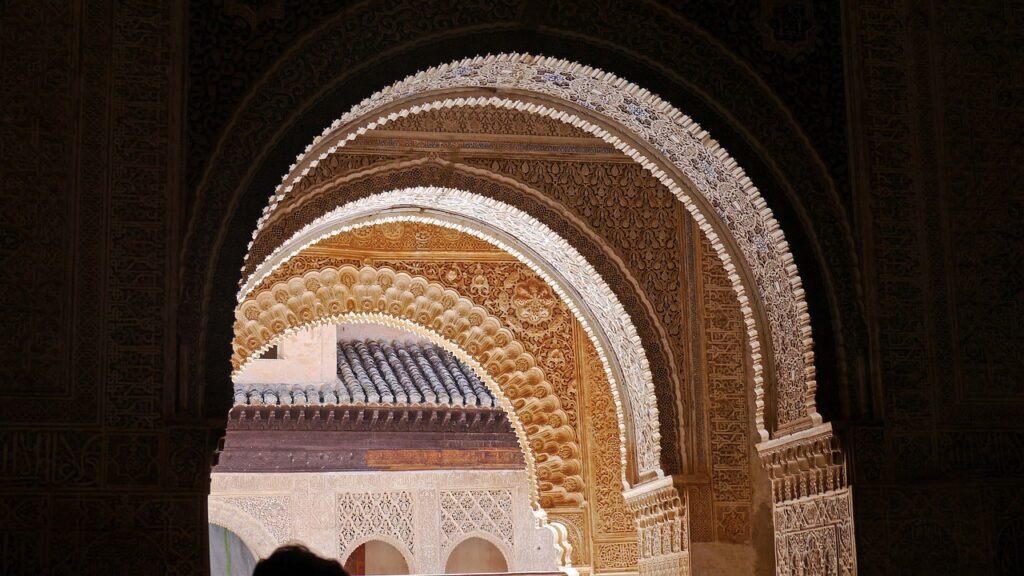
Arabic in Modern Spain
After the fall of Granada and the expulsion of the Moriscos, Arabic nearly disappeared from Spain. For centuries, it survived only in loanwords, architecture, and books. But in the 20th and 21st centuries, Arabic returned in a different way. This time, it came with migration, tourism, education, and business.
Today, Arabic is spoken by hundreds of thousands of people in Spain. Most Arabic speakers are immigrants from Morocco, Algeria, Tunisia, and other North African countries. The largest group is Moroccan, because Morocco is just a short trip across the Strait of Gibraltar. Many Moroccans come to Spain for work in farming, construction, and hospitality. They often settle in southern regions like Andalusia and Murcia or in big cities like Madrid, Barcelona, and Valencia.
These communities bring their languages with them. Moroccan Arabic (Darija) is the most widely spoken variety. In some areas, you can hear Arabic in markets, schools, and public spaces. Children of immigrants often grow up bilingual, speaking Spanish outside and Arabic at home. This keeps the language alive across generations.
Two special places where Arabic plays an official role are Ceuta and Melilla, Spanish territories on the north coast of Africa. Here, Spanish and Arabic live side by side. Many signs and public services are bilingual, and Arabic is commonly spoken in government offices, schools, and daily life. This makes them unique examples of Spanish cities where Arabic is not just a community language but a visible part of society.
Modern Spain also has an academic interest in Arabic. Many universities offer programs in Arabic language and Islamic studies. Students study Classical Arabic to read religious and historical texts, and some study dialects for work in business, diplomacy, or translation. Cities like Granada and Córdoba attract students from around the world who want to connect with Spain’s Andalusi past and practice Arabic in a European setting.
Arabic media has grown as well. There are Arabic-language newspapers, radio stations, and online platforms aimed at the Arab community in Spain. Some mosques and cultural associations run Arabic classes for children, teaching reading and writing alongside Quranic studies. These efforts keep Arabic literacy strong among younger generations.
Tourism adds another layer. Every year, millions of visitors from Arabic-speaking countries travel to Spain. Many of them visit the Andalusi heritage sites, which have become major destinations for cultural tourism. Local guides often speak Arabic to serve these visitors. This has created a demand for Arabic-speaking staff in the tourism and hospitality sectors.
There is also a growing interest among Spaniards in learning Arabic. Some want to connect with the history of Al-Andalus. Others study Arabic for professional reasons, such as working with international NGOs, in diplomacy, or in trade with North Africa and the Middle East. Language schools and online programs have noticed this demand and now offer Arabic courses for beginners and advanced students alike.
Challenges still exist. Some immigrants face social and economic barriers that affect how their languages are seen. In some cases, Arabic is associated with migration issues or stereotypes, which can lead to tension. But many Spaniards are beginning to see Arabic not as foreign but as part of the country’s heritage and multicultural future.
Arabic in modern Spain is therefore a mix of history and new beginnings. It is no longer the language of kings and scholars, but it is once again a living language on Spanish soil. It is heard in homes, schools, and businesses. It is read in books, taught in universities, and used in prayer. It is a reminder that Spain’s connection to the Arabic world did not end in 1492 — it simply changed form.
This modern presence gives learners of Arabic new opportunities. You can travel to Spain, visit historic sites, and practice Arabic with native speakers. You can join language exchanges in cities with large Arab communities. You can even study Arabic at Spanish universities while exploring the culture of Al-Andalus.
Arabic in Spain today is part of a wider story of global movement. As migration and cultural exchange continue, the language will likely become even more common. For learners, this makes Spain an interesting place to experience both European and Arab culture in one trip.
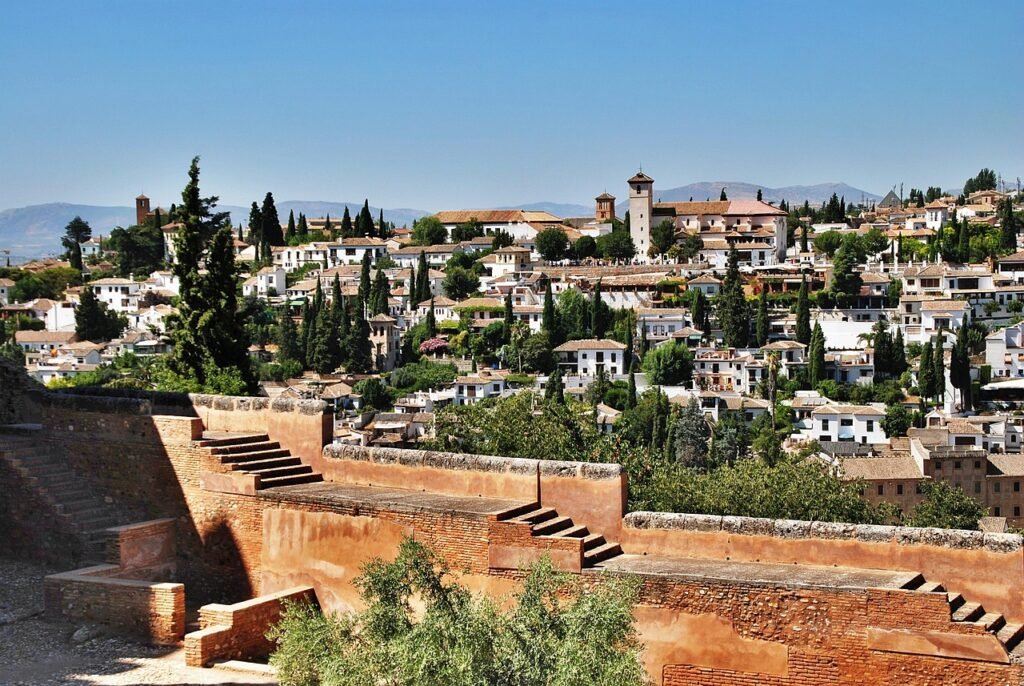
Why Learning Arabic in Spain Can Be a Unique Experience
If you are thinking about learning Arabic, Spain might not be the first country that comes to mind. Many students choose Morocco, Egypt, or Jordan to study the language. But Spain offers something different. It gives you the chance to learn Arabic while living in a European country with a deep Arabic past.
Spain has a unique mix of history and modern life that makes it perfect for Arabic learners. When you walk through Andalusian cities like Granada, Córdoba, and Seville, you can still feel the legacy of Al-Andalus. The architecture, street names, and even the layout of the old towns reflect centuries of Arabic influence. Studying Arabic here lets you connect what you are learning in class with what you see around you.
For example, when you visit the Alhambra and read Arabic inscriptions carved into the walls, you can practice recognizing words and phrases. When you hear Spanish words with Arabic roots, you can trace their original meanings. This creates a learning experience that is richer than just memorizing vocabulary from a textbook.
Spain is also a good place to practice Arabic with native speakers. Because of its proximity to Morocco and other North African countries, there is a large Arabic-speaking community. You can meet people in markets, cafés, and cultural events who speak Arabic as their first language. Some will speak Darija (Moroccan Arabic), others will speak Modern Standard Arabic or other dialects. This gives you real-world listening practice and teaches you to switch between different registers of the language.
Universities and language schools in Spain offer Arabic programs that attract both local and international students. These programs often include cultural activities such as calligraphy workshops, Andalusi music concerts, and guided tours of historical sites. This allows you to understand not just the language but the culture that shaped it.
Another benefit is that you can study Arabic while improving your Spanish. Many classes and resources are taught in Spanish, so you get a double language-learning experience. This can be challenging but also rewarding, especially if you want to work in fields where both Spanish and Arabic are valuable, like translation, international relations, or tourism.
Living in Spain also gives you access to a comfortable environment for study. You can enjoy European infrastructure, transportation, and lifestyle while focusing on your Arabic learning goals. This is attractive for students who want a balance between immersion and convenience.
Cultural events related to Al-Andalus are common in Spain. Cities like Córdoba host festivals celebrating Islamic art and history. These events give learners a chance to experience Arabic culture in a Spanish setting. You can attend lectures, watch traditional performances, and meet scholars who study Arabic history.
Spain is also a bridge between Europe and the Arab world. If you plan to work in business or diplomacy, this makes it a strategic place to study. Many Spanish companies trade with Morocco, Algeria, and Gulf countries. Knowing Arabic can open opportunities to work in these sectors.
Some learners choose to combine their study in Spain with short trips to Morocco or Tunisia. This way, they get exposure to both the European and Arab sides of the Mediterranean. For example, you could spend a semester studying Arabic at the University of Granada, then take a ferry to Tangier for a weekend to practice what you have learned in a fully Arabic-speaking environment.
This combination of history, culture, and accessibility makes Spain a special place for Arabic learners. You are not just learning a language — you are learning about a shared past and a living connection between two worlds.
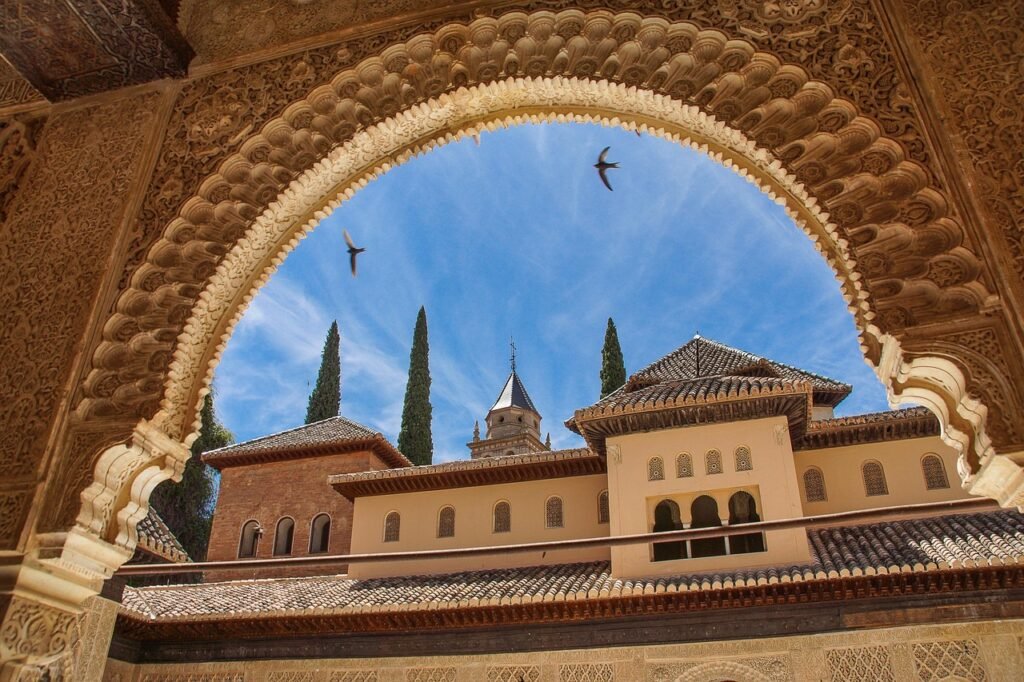
Call to Action
Arabic has been part of Spain’s story for more than a thousand years. From the days of Al-Andalus to the modern cities of Madrid and Barcelona, Arabic has shaped the culture, language, and history of the country. Even though it is not the main language today, it is still alive — in the words Spaniards use, in the architecture that draws millions of visitors, and in the voices of the Arabic-speaking communities who call Spain home.
If you are an Arabic learner, Spain offers an opportunity that is different from anywhere else. You can walk through historic streets, read Arabic inscriptions in palaces and mosques, and talk to native speakers from North Africa — all while living in a European country. You can study at universities or language academies that offer Arabic programs, join cultural events that celebrate Andalusi heritage, and even travel to Morocco for a weekend to experience full immersion.
Learning Arabic is not just about the language. It is about understanding history, culture, and the way societies influence one another. Spain shows this better than almost any other place. It shows how Arabic once changed the course of European history, and how it still plays a role in modern Spain through migration, business, and education.
If you are serious about learning Arabic, start with clear goals. Decide if you want to learn Modern Standard Arabic, a specific dialect like Moroccan Arabic, or both. Choose learning resources that match your goals. Combine textbooks with real-life practice, whether through conversation partners, cultural events, or trips abroad.
You can also join programs like those we offer at Ramdani Arabic Academy. Our mission is to make Arabic learning accessible to students worldwide. We provide online lessons, courses, and articles that help you progress step by step. We also share educational content about Arabic history and culture, so you understand the language in its full context.
My name is Ramdani Mohamed, and I founded Ramdani Arabic Academy to help learners like you build a strong foundation in Arabic. I know the challenges students face — choosing the right materials, staying motivated, and finding a place to practice. That is why we focus on clear explanations, interactive lessons, and practical exercises. Whether you are a beginner or an advanced learner, we aim to make Arabic study simple and effective.
Spain reminds us that Arabic is not just a language of one region but a global language with deep roots and wide influence. By learning it, you connect to a tradition that shaped science, philosophy, art, and literature for centuries. You also prepare yourself for new opportunities in education, work, and travel.
Take the first step today. Learn a few words. Read about the history of Al-Andalus. Talk to a native speaker if you can. And if you want structured guidance, join our courses at Ramdani Arabic Academy. Together we can make Arabic learning not just a goal but a journey you enjoy.
